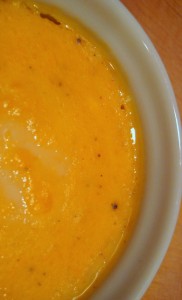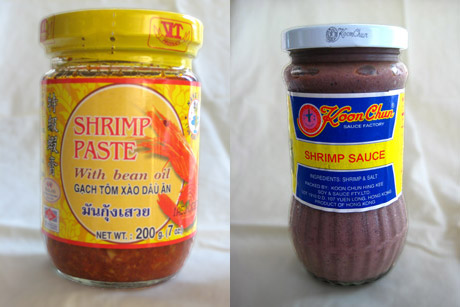
Dan’s in Seattle, and I spent the day in Irvine, so I hadn’t planned on cooking tonight. But by the time I got home, I wasn’t in the mood to go out to eat. The only main ingredient in the fridge was the leftover half of a big butternut squash. A little improvisation, and voilà! Squash pudding. Much better than I had expected!
Here’s an attempt at a reproducible version. The amounts are guesses, but exact proportions don’t matter all that much. The basic squash + eggs + yogurt base could work with several other ingredients. For a Thanksgiving thing I might add pecans and dried cranberries. Or maybe a more Mediterranean flair with feta and red peppers.
Squash Pudding
- 1/2 large butternut squash
- 3 eggs
- 1/2 c. Greek yogurt
- 1 c. frozen corn
- 1/3 c. dried tart cherries
- 1/3 c. grated parmesan cheese
- nutmeg, salt, & pepper to taste
First, cook the squash until it’s soft. I peeled the squash and cut it into cubes, then dumped it in my steamer, but I could have microwaved it or boiled it or baked it. Whateva. Let it cool a bit (you don’t want it to cook the eggs) and mash it up.
Mix squash with the rest of the ingredients. Spray 6 ramekins with non-stick cooking spray, and fill not quite to the top with the mix. Cover with plastic wrap. Steam for about 25 minutes or until they’re set. (You could also bake them in a water bath in the oven, but then don’t use the plastic wrap.)

To serve: hold the ramekins with a towel (they’re hot!), run a knife around the edge, and then invert ramekin onto plate.




 Grandma Mary had a very sudden massive cerebral hemorrhage yesterday morning. She never regained consciousness, and passed away this morning.
Grandma Mary had a very sudden massive cerebral hemorrhage yesterday morning. She never regained consciousness, and passed away this morning.

